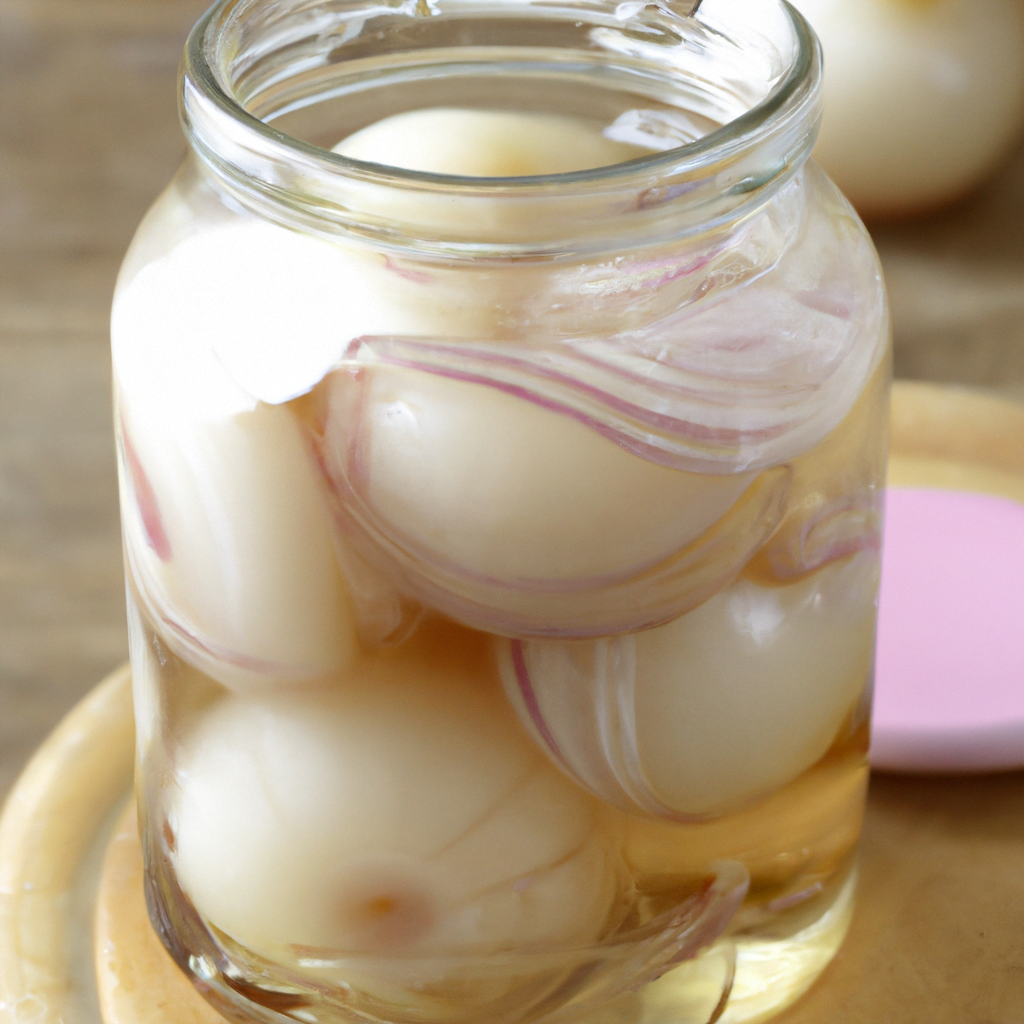Servings 1
- Amount Per Serving
- Calories 40kcal
- % Daily Value *
- Sodium 150mg7%
- Total Carbohydrate 7g3%
- Sugars 6g
* Percent Daily Values are based on a 2,000 calorie diet. Your daily value may be higher or lower depending on your calorie needs.

Old-Fashioned Pickled Onions are a classic condiment that has been cherished for generations. With their sharp, tangy flavor and satisfying crunch, these pickles add a burst of zest to a wide variety of dishes. Whether served alongside hearty meats, added to sandwiches, or enjoyed straight from the jar, pickled onions are a versatile and delightful addition to any pantry. Their simple preparation and long shelf life make them a staple in traditional kitchens, beloved for their ability to elevate even the most basic meals.
Pickled onions are onions that have been preserved in a mixture of vinegar, water, sugar, and spices. The pickling process not only extends the shelf life of the onions but also infuses them with a distinctive tangy flavor that complements their natural sweetness. Depending on the recipe, pickled onions can range from mildly sweet to intensely sour, with a variety of spices like mustard seeds, peppercorns, and bay leaves adding complexity to the flavor profile.
The onions used for pickling are typically small, such as pearl onions or shallots, but larger varieties like red or white onions can also be used. The onions are often blanched before being submerged in the pickling brine, which helps them retain their crisp texture while absorbing the flavorful liquid.
The practice of pickling onions dates back centuries, with origins in the need to preserve vegetables for long-term storage. Pickling was a common method used by our ancestors to ensure they had access to flavorful and nutritious foods during the winter months when fresh produce was scarce. Over time, pickled onions became more than just a preservation technique; they evolved into a popular condiment enjoyed for their unique taste and versatility.
In many cultures, pickled onions have become a traditional accompaniment to meals. In the United Kingdom, for example, pickled onions are often served with fish and chips, ploughman's lunches, or as part of a charcuterie board. In the United States, they are commonly used as a topping for burgers, tacos, and salads, adding a tangy crunch that enhances the overall flavor of the dish.
While the basic recipe for pickled onions remains largely consistent, there are many variations that cater to different tastes and culinary traditions. Here are a few popular types:
Creating the perfect jar of Old-Fashioned Pickled Onions involves attention to a few key details:
Old-Fashioned Pickled Onions are incredibly versatile and can be enjoyed in numerous ways:
How long do pickled onions last?
When stored in a sealed jar in the refrigerator, pickled onions can last for up to a month. Their flavor may intensify over time.
Can I reuse the pickling brine?
Yes, you can reuse the brine once or twice to pickle more onions or other vegetables. Just make sure to boil the brine again before using it to ensure it’s still safe to use.
Are pickled onions good for you?
Pickled onions are low in calories and can be a good source of probiotics if naturally fermented. However, they can be high in sodium, so enjoy them in moderation if you’re watching your salt intake.
Old-Fashioned Pickled Onions are a timeless condiment that brings a burst of tangy flavor to any dish. Whether you enjoy them on a sandwich, as part of a charcuterie board, or straight from the jar, these pickles are a simple yet satisfying way to add a touch of homemade goodness to your meals. With their rich history, endless variations, and easy preparation, pickled onions are a must-have in any kitchen.
Enjoy the sharp and tangy flavor of Old-Fashioned Pickled Onions, a timeless condiment that adds zest to any dish. This simple homemade recipe uses basic ingredients to create crisp, flavorful pickled onions that are perfect for burgers, salads, sandwiches, and more. Follow our easy steps to make this delightful addition to your pantry.
Servings 1
* Percent Daily Values are based on a 2,000 calorie diet. Your daily value may be higher or lower depending on your calorie needs.